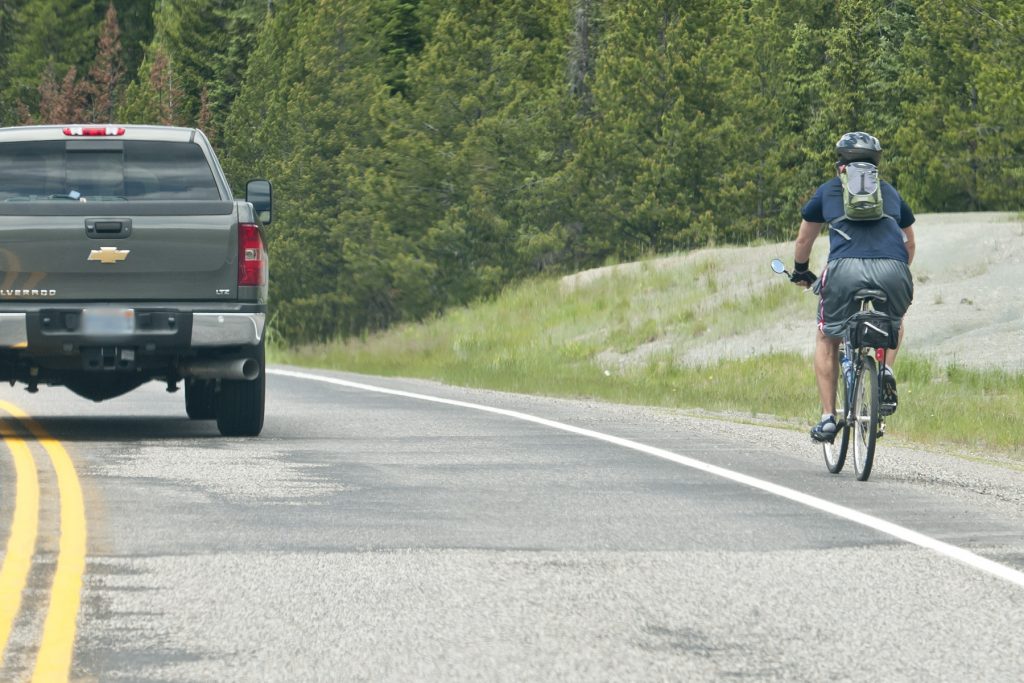WTI Road Ecologist Publishes Thesis in Transportation Safety and Environment

Mathew Bell has published his master’s thesis, coauthored with Yiyi Wang and Rob Ament, on mitigating imbalanced wildlife-vehicle collision data using the SMOTE technique. Abstract: Wildlife-vehicle collisions (WVCs) with large animals are estimated to cost the United States over $8 billion in property damage, tens of thousands of human injuries, and nearly 200 fatalities each […]
New Publication: Safe Interactions Between Vehicles and Bicyclists

The Journal of Safety Research has published an article that examines the influence of traffic safety culture on a driver’s behavior when interacting with bicyclists on the roadway. “Traffic safety culture and prosocial driver behavior for safer vehicle-bicyclist interactions” is based on a research collaboration between the Center for Health and Safety Culture (CHSC) and […]
NEW PUBLICATION: Idaho Barn Owl Study Explores High Rates of Road Mortality
Ibis, an international journal of avian science, has published an article based on a WTI Road Ecology project in Idaho. “Spatial, road geometric and biotic factors associated with Barn Owl mortality along an interstate highway” studied the high rates of collisions between Barn Owls and vehicles on Interstate 84 in Southern Idaho. It stems from […]
Aviation Journal Highlights Aviation Weather Portal project
The State Aviation Journal recently published a feature article on the benefits of an aviation weather and travel tool developed by the California Department of Transportation (Caltrans) and WTI. “Caltrans Continues to Emphasize Value of Aviation Weather and Travel Portal” describes the Aviation Weather Information (AWI) portal, which links dozens of commonly used (official) aviation […]
New Publication: Arctic Grayling Research featured in Journal of Ecohydraulics
Installing effective fish passage structures that provide connectivity for Arctic grayling is a promising conservation strategy for imperiled populations. The Journal of Ecohydraulics has published a study by Road Ecology researcher Matt Blank and several colleagues, which examined the swimming behavior of grayling from Montana in an open-channel flume. The results “provide some of the […]
New Publication: Study Estimates Costs of Animal-Vehicle Collisions in Brazil
Animal-vehicle collisions (AVCs) are a threat to both humans and wildlife, and they have an economic cost to society. PLOS ONE has published a study by WTI researcher Marcel Huijser and his international research partners that documents the impacts of AVCs in São Paulo State, Brazil. Based on the findings, the research team estimates that […]
New Publication: How effective are flashing beacons at crosswalks?
WTI Program Manager Ahmed Al-Kaisy is the lead author of “Motorists’ voluntary yielding of right of way at uncontrolled midblock crosswalks with rectangular rapid flashing beacons,” recently published in the Journal of Transportation Safety and Security. This article presents an investigation into the motorists’ voluntary yielding behavior to bicycles and pedestrians. Two study sites in […]
New Publication: Testing the swimming capabilities of Arctic Grayling
Northwest Science has published the journal article “Swimming Capabilities of Artic Grayling.” The article, authored by Joel Cahoon, Audrey Jones, and Kathryn Plymesser of MSU’s Civil Engineering Department; Kevin Kappenman and Erin Ryan of the US Fish and Wildlife Service; and Matt Blank of WTI highlights research to study the swimming ability of arctic grayling […]
New Publication: The role of social capital in traffic safety citizenship
Traffic safety citizenship is an emerging approach to reduce serious injuries and fatalities on our roadways. The International Journal of Interdisciplinary Civic and Political Studies recently published “The Role of Social Capital in Traffic Safety Citizenship” by Kari Finley, Jay Otto, and Nic Ward of the Center for Health and Safety Culture. The journal article […]
New Publications Released on Traffic Safety Culture and Traffic Safety Citizenship
A Strategic Approach to Transforming Traffic Safety Culture to Reduce Deaths and Injuries The Transportation Research Board’s (TRB’s) National Cooperative Highway Research Program (NCHRP) has released the results of a national study on traffic safety culture, led by P.I. Nic Ward of the Center for Health and Safety Culture and Cambridge Systematics. “A Strategic Approach to […]
